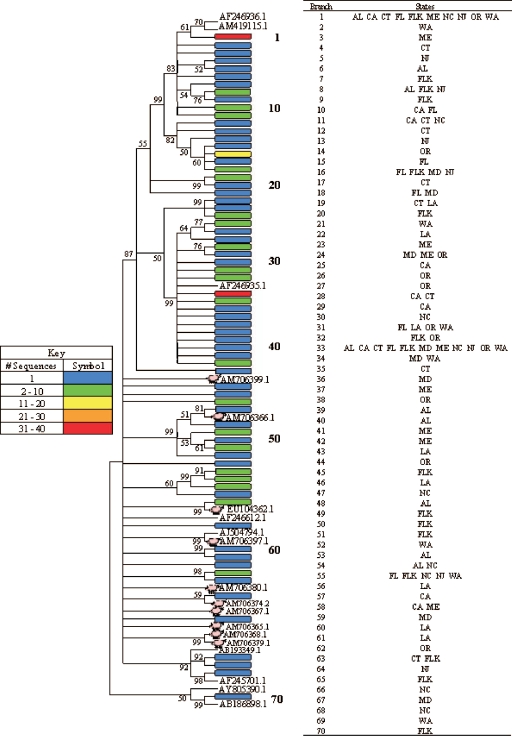FIG. 1.
Condensed neighbor-joining (Jukes-Cantor model) phylogenetic tree of a ∼200-bp segment of the picobirnavirus RNA-dependent RNA polymerase gene from 207 U.S. raw sewage sequences. Each branch represents a sequence or a group of sequences (99% identical with gaps) depending upon the block color. Every colored block is numbered from top to bottom, and the number corresponds to the adjacent table, which explains the locations represented by each block (Alabama [AL], California [CA], Connecticut [CT], Florida [FL], Florida Keys [FL K], Louisiana [LA], Maine [ME], Maryland [MD], North Carolina [NC], New Jersey [NJ], Oregon [OR], and Washington [WA]). Reference sequences of human and porcine picobirnaviruses from previously published studies are identified by their GenBank accession numbers, and porcine picobirnaviruses are indicated with a pig (8, 9, 13, 20, 59, 70, 79; J. Buesa, R. Montava, C. Tellez, and J. M. Ribes, unpublished data).

